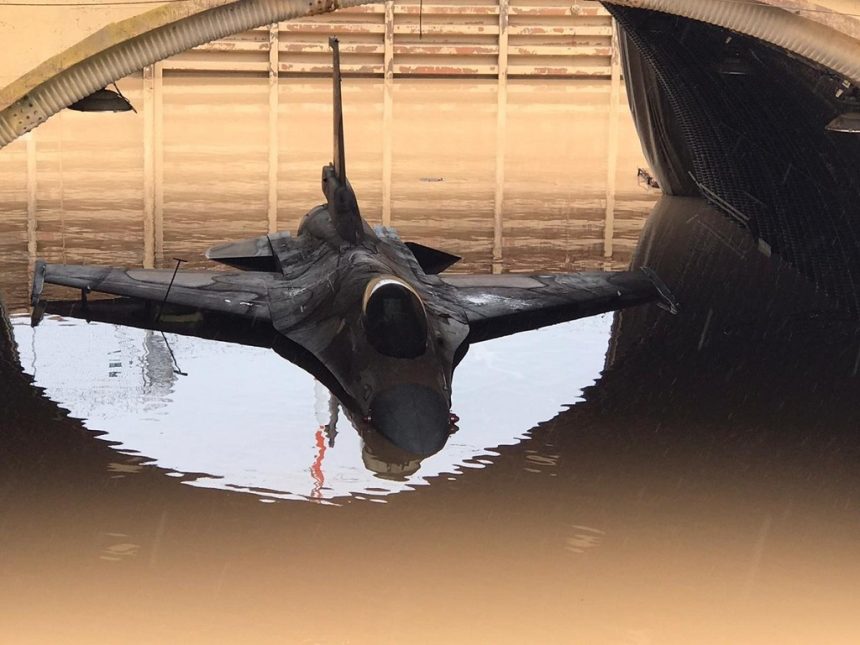The IAF is now investigating why the Baraks weren’t moved from their underground hangars
Last week Israel was hit by heavy rains which caused widespread flooding in several cities. Military installations weren’t spared by the rain either, notably damaging eight F-16C/D “Baraks” in the hangars at Hatzor Airbase. The incident was initially censored, until the Heyl Ha’Avir (Israeli Air Force) acknowledged it on Jan. 13, 2020. The facts reportedly happened around three days earlier.
In a release to Israeli medias, an IAF officer stated that “due to the extreme weather conditions last week, creeks near the airbase in the southern part of the country overflowed and flooded several focal points at the base. The Air Force prepared all its bases for the [inclement] weather. The main priority was [to protect] human life and then equipment and weapons. Up until 5 a.m. the base was dry. And then came 50,000 cubic meters of water, which knocked down cement walls”.
The jets were parked in underground hangars, called datak in Hebrew. The officer admitted: “We made a mistake by not evacuating the underground hangars. Eight planes were left there. It was a mistake not to move them, which we will investigate.” The water in the hangars where the Baraks were parked reportedly reached a depth of 1.5 meters.

The Baraks are assigned to the 101 Squadron, also known as the First Fighter Squadron, or to the 105 Squadron, also known as The Scorpion, both based at Hatzor. Of the eight F-16 involved, only three sustained serious damage, but the IAF assessed that they will be repaired and returned to service in a week.
The total damage toll is estimated to be in the tens of millions of shekels, which should be at least three million USD with the current change. The flooding did not harm the operational ability, according to the IAF, and the operations at Hatzor AB returned to normal on Sunday, after the water was pumped out of the hangars during the weekend.
A similar situation involved also Offutt AFB (Nebraska) last year, when floodwaters submerged about one third of the base, with water reaching a depth of 2.5 meters in some areas. Unlike the flooding in Israel, the U.S. Air Force decided to fly 8 RC-135 Rivet Joint reconnaissance aircraft and one E-4B National Airborne Operations Center to different locations, in order to avoid damage.









